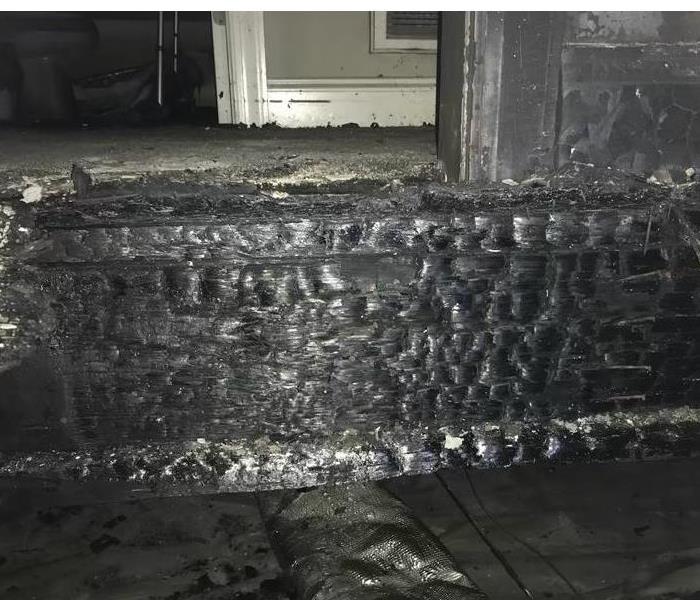How Mold Can Develop After a House Fire
7/17/2024 (Permalink)
 While a house fire is challenging, preventing mold growth is an essential part of the recovery process.
While a house fire is challenging, preventing mold growth is an essential part of the recovery process.
Going through a house fire is incredibly stressful, and the first priority is always to put out the fire and make sure the house is safe. But once the fire is out, there’s a new problem that might arise: mold. It’s not usually the first thing you’d worry about after a fire, but it’s important to know how mold can begin to grow and spread throughout your home.
The Connection Between Fire and Mold
The process of extinguishing a fire typically involves large amounts of water, whether from fire hoses or sprinkler systems. This necessary step leaves behind an excessive amount of moisture. Since mold spores are naturally present in the air, they only require moisture and organic material to start growing. The conditions post-fire are often prime for mold growth to begin.
Why Mold Growth After a Fire Is a Concern
Mold can cause significant damage to the structure of your home. It has the potential to degrade various materials like wood, drywall, and carpeting, compromising both the strength and integrity of these structures. This makes addressing mold quickly an important step in the post-fire restoration process.
Immediate Steps to Prevent Mold Growth
- Water Extraction: Quickly removing standing water is crucial. Using industrial-strength fans, dehumidifiers, and water pumps can help dry out the affected areas effectively.
- Salvage and Discard: It's important to remove items that are heavily water-damaged and unlikely to dry sufficiently. Materials such as carpets, rugs, and upholstered furniture should be addressed immediately to avoid becoming breeding grounds for mold.
- Increase Airflow: Increasing airflow by opening windows and doors facilitates faster drying and reduces moisture levels.
- Inspect and Clean: Areas affected by soot and smoke should be cleaned thoroughly. Soot can retain moisture, which may encourage mold growth if not addressed.
Professional Mold Remediation
In the aftermath of a fire, engaging professional mold remediation services can be highly beneficial. These experts use advanced tools and techniques to ensure that your home is thoroughly dried and safeguarded against future mold issues. Remediation services typically include:
- A detailed evaluation to identify all areas at risk.
- The use of professional-grade drying equipment and HEPA vacuums.
- Application of antimicrobials to discourage mold growth from the outset.
- Necessary repairs and restoration to structures damaged by water.
Long-Term Mold Prevention
After addressing immediate mold concerns, implementing long-term strategies to prevent recurrence is essential:
- Use dehumidifiers to keep indoor humidity levels below 50%.
- Check your home regularly for signs of moisture, especially in areas prone to dampness like basements and attics.
- Ensure good ventilation, particularly in areas like kitchens and bathrooms, to manage moisture effectively.
While a house fire is challenging, preventing mold growth is an essential part of the recovery process. Taking swift and effective measures can significantly reduce the likelihood of mold development and help maintain the structural integrity of your home. Professional remediation services are invaluable in ensuring a thorough and effective restoration, keeping your home secure and well-maintained. For further guidance or assistance with mold prevention after a fire, don’t hesitate and reach out to our SERVPRO of Harnett County West team today!

 24/7 Emergency Service
24/7 Emergency Service